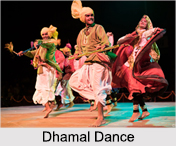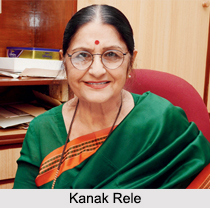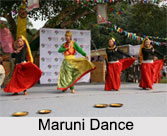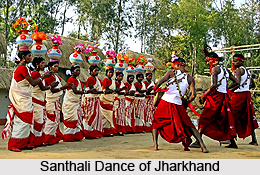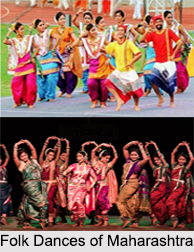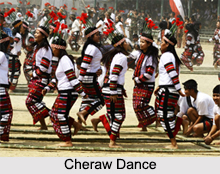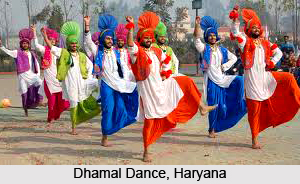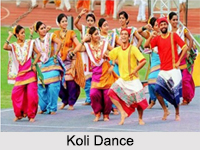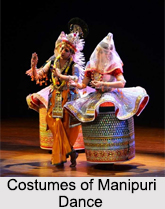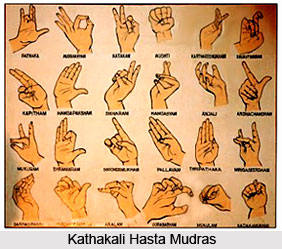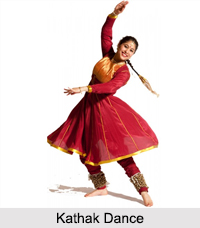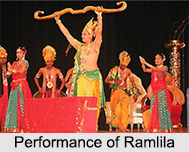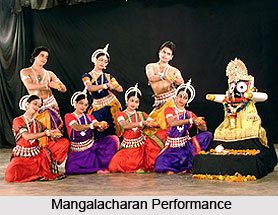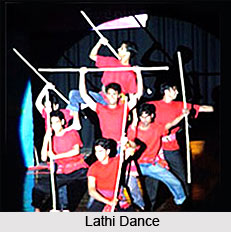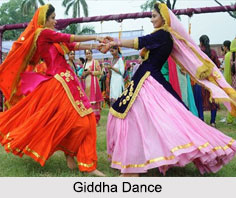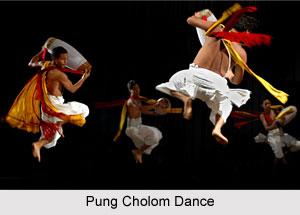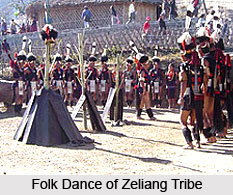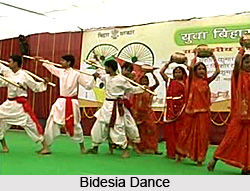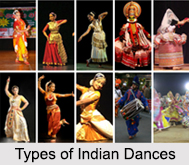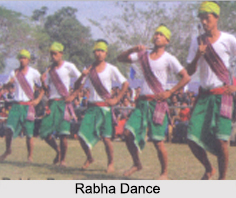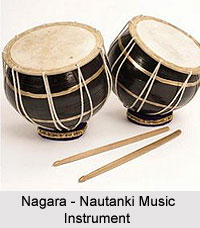 Music in Nautanki plays a crucial role towards enhancing the effects of the narrative. The theatre, and especially the operatic or musical theatre, possesses a complex system of communication, combining in one integrated medium a number of separate subsystems. The union in theatre of various visual and auditory media was intimated by Bharata in the Natyashastra, when he described how Lord Brahma borrowed the best element of each of the four Vedas to fabricate his invention. To Bharata`s Pathya (verbal recitation), gita (music and song), Abhinaya (gestures and movement), and Rasa (sentiments and emotions) we might add other systems of theatrical communication: costumes and makeup, curtains and scenery, uses of space, props, and sound effects. The interplay of these systems creates a sensory bombardment, enriching levels of meaning and contributing both to theatre`s distinctive identity and to its effect on an audience. In the vocabulary of semiotics, we can say that theatre engages the spectator by means of a "surplus of signifiers." From this profusion of coded messages, we isolate different symbol sets or systems.
Music in Nautanki plays a crucial role towards enhancing the effects of the narrative. The theatre, and especially the operatic or musical theatre, possesses a complex system of communication, combining in one integrated medium a number of separate subsystems. The union in theatre of various visual and auditory media was intimated by Bharata in the Natyashastra, when he described how Lord Brahma borrowed the best element of each of the four Vedas to fabricate his invention. To Bharata`s Pathya (verbal recitation), gita (music and song), Abhinaya (gestures and movement), and Rasa (sentiments and emotions) we might add other systems of theatrical communication: costumes and makeup, curtains and scenery, uses of space, props, and sound effects. The interplay of these systems creates a sensory bombardment, enriching levels of meaning and contributing both to theatre`s distinctive identity and to its effect on an audience. In the vocabulary of semiotics, we can say that theatre engages the spectator by means of a "surplus of signifiers." From this profusion of coded messages, we isolate different symbol sets or systems.
Even a preliminary overview of the traditional theatres of India suggests that these multiple systems of communication are ordered into hierarchies that vary from theatre to theatre. Abstract masks and song-less speechless mime dominate the Seraikella Chhau of Bihar, while the shifting use of municipal space flavours the grand Ramlila at Ramnagar in the Indian state of Uttar Pradesh. In the Kuchipudi theatre (Andhra Pradesh) and the Bhagavatamela (Tanjore district in the state of Tamil Nadu), elaborate dance and stylized hand gestures prevail. Spectacular headdresses, costumes, and colour coded makeup distinguish both the Kathak theatre of Kerala and the Yakshagana of Karnataka.
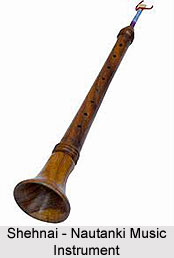 In Nautanki, it is the music that constitutes the most important nonverbal system of communication, ranking above dance, acting techniques, or visual symbolism as a signifier of meaning. Further, the musical system of Nautanki separates it from performance traditions that share its narratives, serving as a determinant of genre. A Nautanki play based on the Alha story can be identified by its own music, different from that of an Alha epic recitation; the music similarly gives away a Nautanki performance occurring at the edges of a Raslila festival. Music in its alliance with poetic meter is the principal source of Nautanki`s aesthetic impact on its audience. The sound of Nautanki resides in the consciousness of the person listening to it, giving melody and rhythm to remembered snatches of words, aiding in their acquisition and retention. Musical and metrical structures weave through Nautanki`s treasury of hundreds of tales, conferring a unity on an outsized body of folklore. Furthermore, as Nautanki has formed and reformed in the last hundred or more years, it is the music that has most clearly registered the radical shift in the relations between folk theatre and society.
In Nautanki, it is the music that constitutes the most important nonverbal system of communication, ranking above dance, acting techniques, or visual symbolism as a signifier of meaning. Further, the musical system of Nautanki separates it from performance traditions that share its narratives, serving as a determinant of genre. A Nautanki play based on the Alha story can be identified by its own music, different from that of an Alha epic recitation; the music similarly gives away a Nautanki performance occurring at the edges of a Raslila festival. Music in its alliance with poetic meter is the principal source of Nautanki`s aesthetic impact on its audience. The sound of Nautanki resides in the consciousness of the person listening to it, giving melody and rhythm to remembered snatches of words, aiding in their acquisition and retention. Musical and metrical structures weave through Nautanki`s treasury of hundreds of tales, conferring a unity on an outsized body of folklore. Furthermore, as Nautanki has formed and reformed in the last hundred or more years, it is the music that has most clearly registered the radical shift in the relations between folk theatre and society.
Over the last hundred years, the context for Nautanki music has altered from patron-supported open competition to production of a commercially oriented commodity. Remnants of the historically discrete musical styles now coexist. The older Hathras style, to the extent that it survives, has maintained the improvised character and agonistic ethos of the traditional art, while in the Kanpur style and on recorded disks and cassettes, the music has become standardized.
Over the last hundred years, the context for Nautanki music has altered from patron-supported open competition to production of a commercially-oriented commodity. Remnants of the historically discrete musical styles now coexist. The older Hathras style, to the extent that it survives, has maintained the improvised character and agonistic ethos of the traditional art, while in the Kanpur style and on recorded disks and cassettes, the music has become standardized, melodically and metrically simplified, and commoditised to meet very different market conditions and listener expectations.
